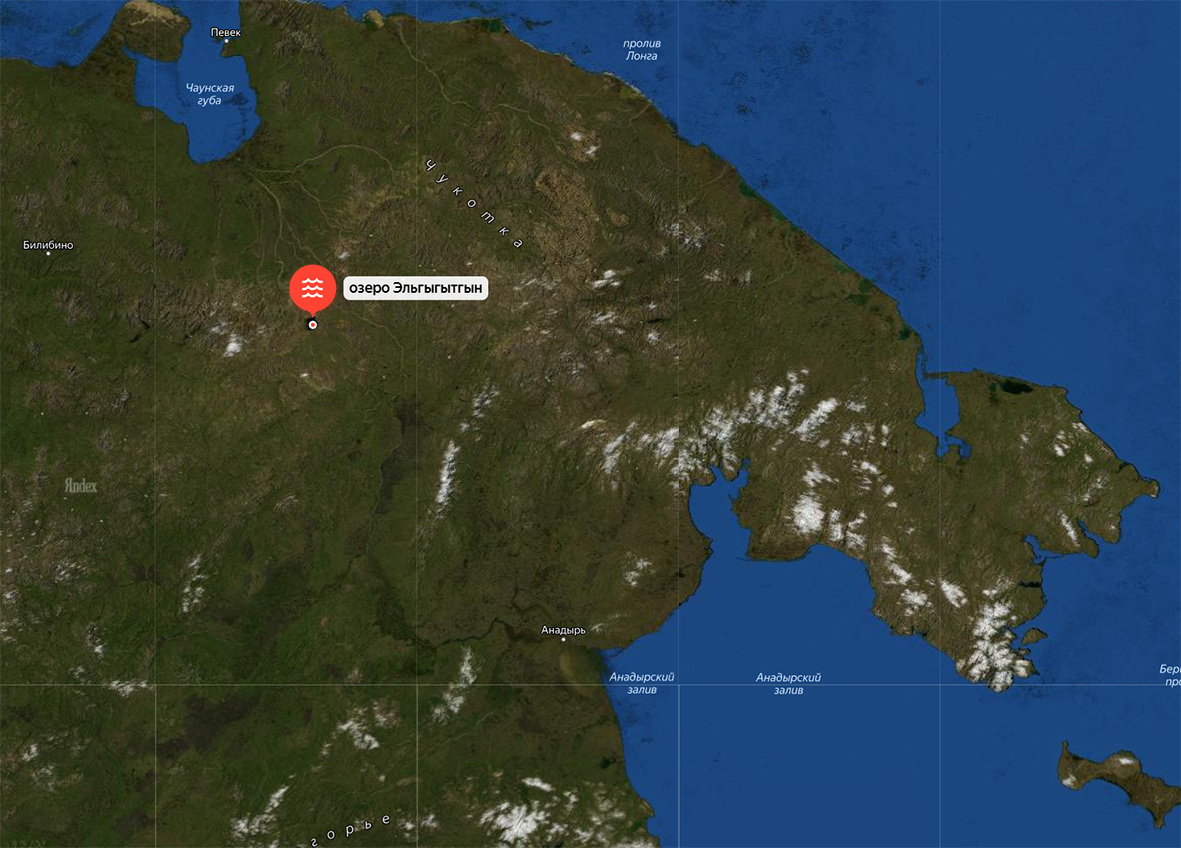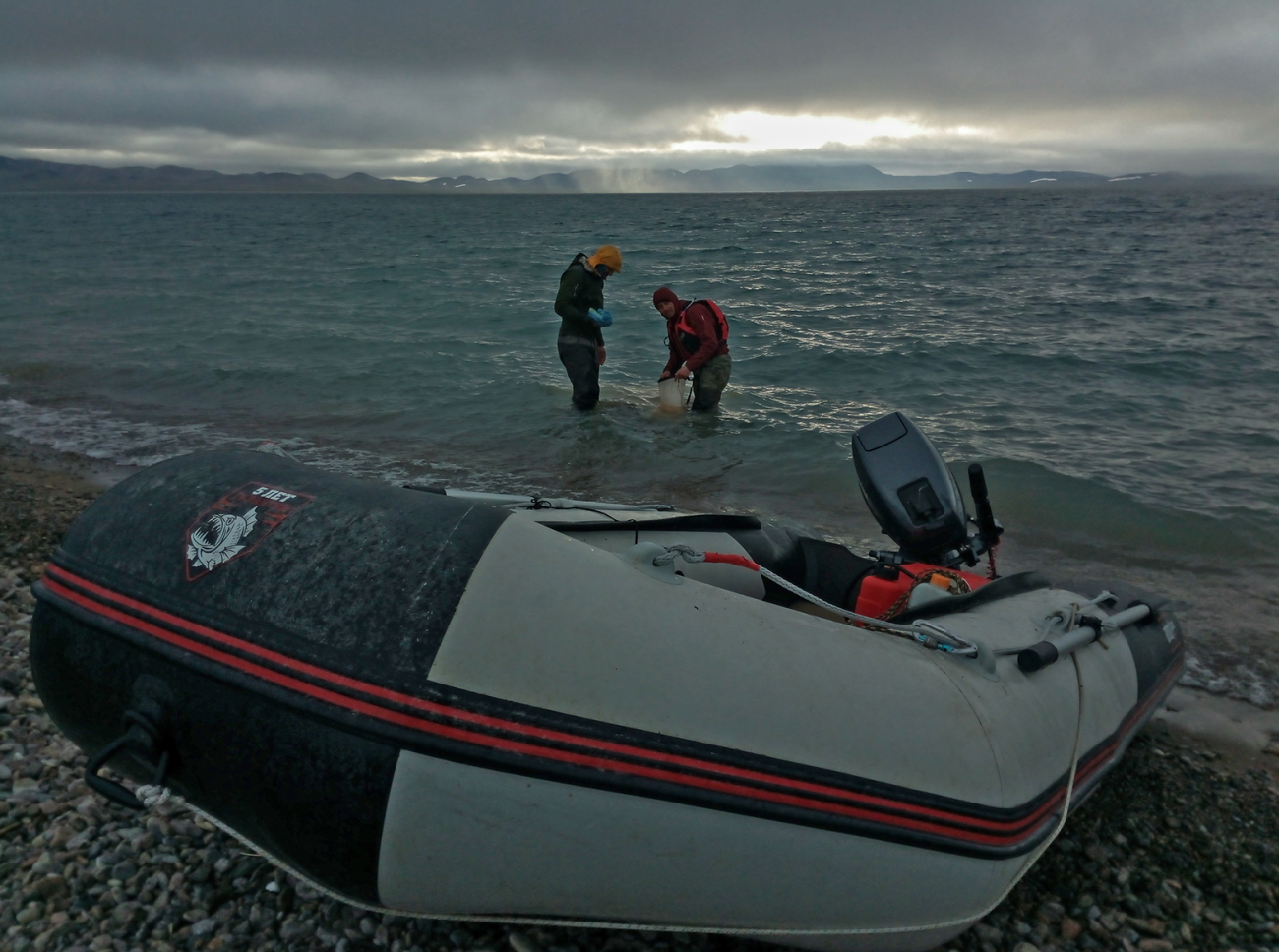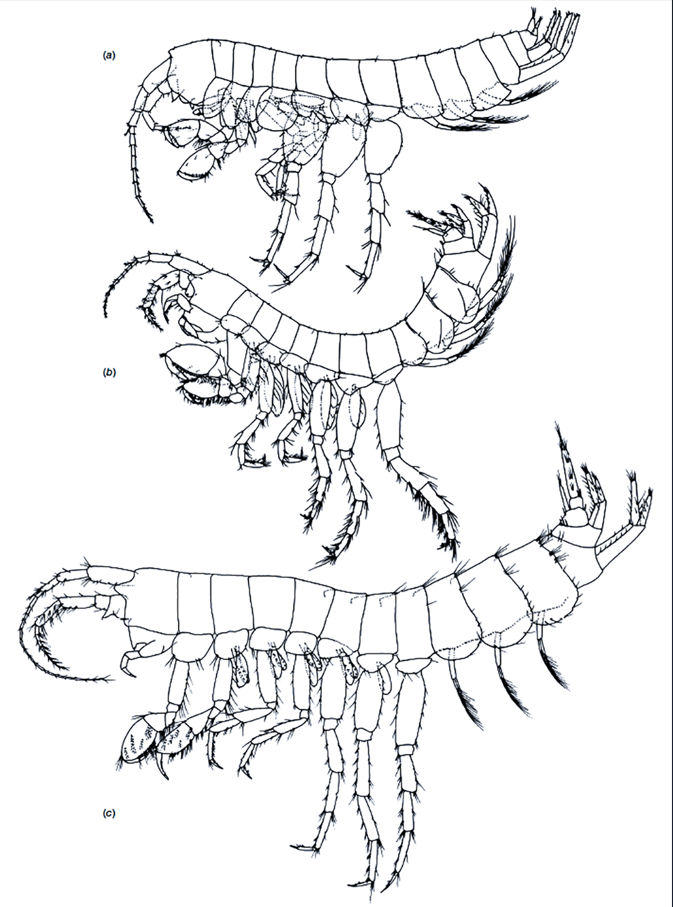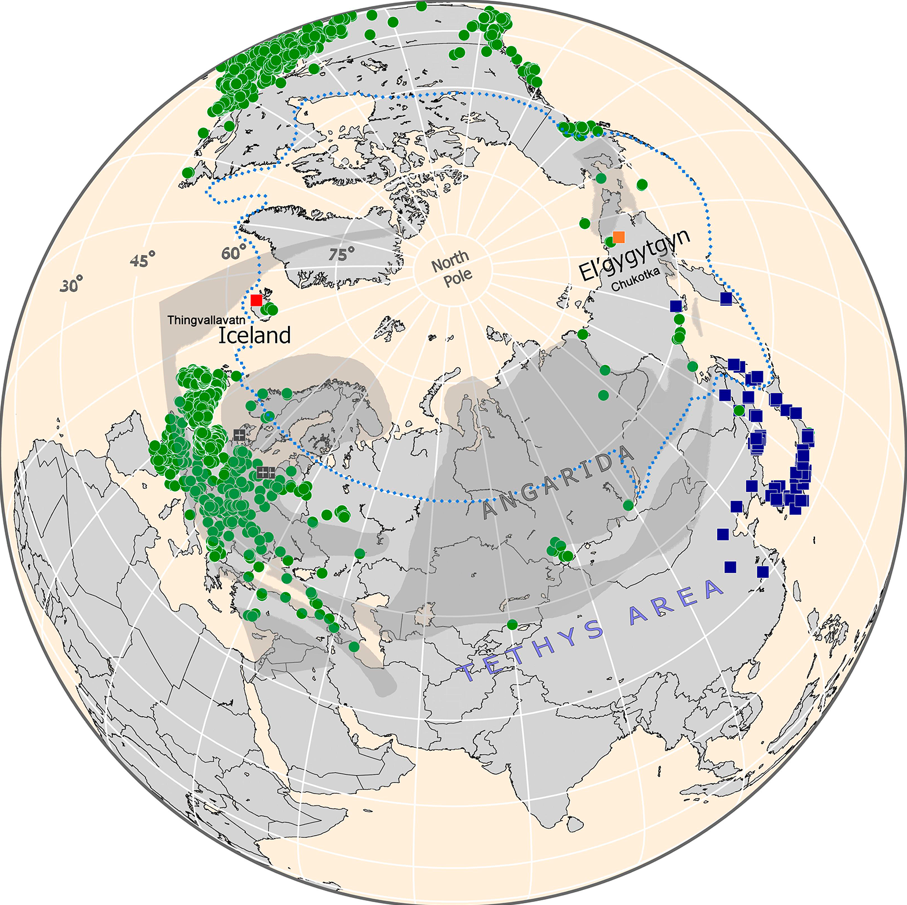
Fig. 1 Map of Chukotka and lake Elgygytgyn
In the very heart of Chukotka, in the middle of the Anadyr Plateau, just north of the Arctic Circle, lies Lake Elgygytgyn (Fig. 1), formed as a result of a meteorite fall about 3.6 million years ago. Despite its inaccessibility and harsh climatic conditions, the lake has long attracted the attention of researchers. The first descriptions of Lake Elgygytgyn were made by S.V. Obruchev in 1933. Then several complex geological, geophysical and hydrological expeditions worked on the lake and its environs, the last of which, "Paleoclimate of Lake Elgygytgyn", was carried out by a joint effort of an international group of scientists in 1998-2011. As a result of the research, the scientists were able to establish that the sedimentary rocks of Lake Elgygytgyn are keepers of information about changes in the paleoclimate and paleoecology of the region over the past 3.5 million years; that the lake has never been covered by glaciers since its filling (2.9 million years ago), but has undergone significant changes in water level, as well as periods of long (over many years) stay under ice (https://paleopolar.aari.ru/ozero-elgygytgyn). All this led to the formation of a unique ecosystem, which includes both very ancient species that used the lake as a refuge, and relatively young ones that penetrated the lake during the last postglacial period and underwent adaptive radiation inside the lake. However, biological studies of the lake have so far been extremely short-term and sporadic in nature and have been devoted mainly to the study of the ichthyofauna.

In 2020, employees of the A.N. Severtsov Institute of Ecology and Evolution of the Russian Academy of Sciences (IEE RAS) collected ichthyological and hydrobiological samples in Lake Elgygytgyn and in adjacent water bodies (Fig. 2). As a result, it was possible to reconstruct the history of the formation of the endemic ichthyofauna of Lake Elgygytgyn, describe the physiological features and diversification stages of the chars of the genus Salvelinus included in it (Esin et al., 2021; 2024). Analysis of benthic samples collected at different depths of the lake allowed us to describe several new endemic nematode species (Gusakov et al., 2022) and to discover the northernmost currently known benthic community of blind amphipods (Amphipoda), consisting of two species: Palearcticarellus hyperboreus and Pseudocrangonyx elgygytgynicus (Fig. 3). Of particular interest is the fact that the closest modern relatives of P. hyperboreus inhabit high-mountain lakes of Altai, and crayfish related to P. elgygytgynicus are found in caves in Iceland (Fig. 4). This indicates that the discovered species formed outside the lake, populated it as a result of independent waves of colonization before the onset of the Quaternary (Pleistocene) glaciation and, in the absence of competition with other amphipod species, have survived in it to this day. It is noteworthy that these crustacean species are the main food source for the deep-sea relict char species S. svetovidovi, which colonized the lake shortly after it was filled (Osinov et al., 2015; Esin et al., 2021; 2024).

Fig. 3. Morphology of amphipod crustaceans (Crangonyctoidea; Amphipoda): a - Palearcticarellus hyperboreus; b/c - male and female Pseudocrangonyx elgygytgynicus
Considering that earlier, in addition to endemic fish and invertebrates, endemic species of algae were discovered in the lake (Kharitonov & Genkal, 2010; Luethje & Snyder, 2021), and the benthic samples collected in 2020 included at least three new species of polychaete worms (Oligochaeta) awaiting description, Lake Elgygytgyn can be safely called a point of high endemism, requiring further more detailed study and assignment of the status of a specially protected natural area.

Results published: Copilaş-Ciocianu Denis, Prokin Alexander, Esin Evgeny, Shkil Fedor, Zlenko Dmitriy, Markevich Grigorii, Sidorov Dmitry (2024) The subarctic ancient Lake El’gygytgyn harbours the world’s northernmost ‘limnostygon communityʼ and reshuffles crangonyctoid systematics (Crustacea, Amphipoda). Invertebrate Systematics 38, IS24001.
